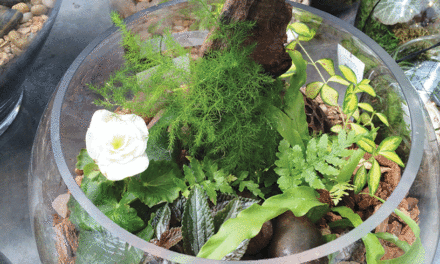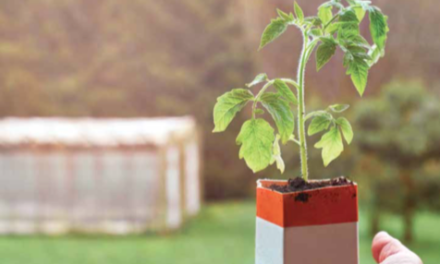
Sunflowers grow happily all summer, so succession planting can give a longer period of blooms. (Photo by Sean Clougherty)
Sunflowers are more than just beautiful additions to your garden; they are symbols of summer, joy, and abundance. Their towering heights and radiant faces can transform any outdoor space into a vibrant spectacle.
If you’ve ever admired these magnificent blooms and wished you could have more, you’re in luck! Propagating sunflowers is a rewarding and relatively simple process that allows you to multiply your favorite varieties or grow new plants from the seeds of your existing beauties.
Whether you’re aiming to fill your garden with a golden sea of petals or simply want to try your hand at seed saving, gardening expert Calum Maddock at HomeHow.co.uk shares everything you need to know to successfully propagate sunflowers.
What You Will Need
Below is a list of the things that you will need in order to propagate sunflowers:
• A couple of paper bags;
• Garden scissors;
• An envelope or small jar with a lid;
• Medium-sized pots with drainage holes;
• Fine soil or peat-free, multipurpose compost;
• Watering can;
• Dibber or pencil;
• A cane or stake for support and some string; and
• A plastic bottle
One of the easiest ways to propagate new plants from one sunflower is to collect and dry out the seeds after it flowers.
Once your sunflower has flowered, leave it in place rather than cutting it down. Seeds will form in the centre of the flowerhead. They’ll need a little time to develop. So, to protect the seeds from birds, you may need to pop a paper bag over the flowerhead until it’s ready to cut off.
You’ll need to wait around two weeks after flowering has finished before you can start collecting the seeds. A good sign that the time is right is when the petals have faded and are starting to drop off. You may notice the base of the stem turning yellow, too. Have a check to see if the seeds are starting to come loose from the flowerhead. If so, carefully snip the whole flower head off along with around 10cm of the stem. This makes it easier to handle.
You can either pop the head into a clean, dry paper bag and give it a shake or shake the head over a sheet of newspaper. The seeds should all fall out of the flowerhead quite easily. If you’re not sowing the seeds straight away, leave them in a warm, dry place for a few days before popping them into an envelope or sealed jar. Remember to label your seed container, so you don’t forget what they are.
Sunflowers grow happily all summer, so you may want to grow new sunflower plants straight away. If so, choose a sturdy pot with a drainage hole in the bottom. For tall-growing sunflowers, a wider-bottomed pot will help them stay upright. Alternatively, plant your seeds directly at the back of your border or bed.
For pot-grown sunflowers, fill your pot with soil or multipurpose compost and water it to make it moist but not wet. If you’re planning to stake the sunflower, put the stake into the soil first. This saves the risk of pushing the stake through the roots while the plant is growing.
Make a little hole, about an inch deep, in the soil using a dibber or pencil. Now, pop in one of your seeds and cover it over gently with the soil.
If you’re planting up more than one sunflower, you’ll need a gap of around 8 to 12 inches between each hole or multiple pots.
You can cut the end off a plastic bottle to make a cover for your sunflower seedling. This will protect it from slugs and increase the humidity to boost growth. Once it’s tall enough, remove the cover and loosely tie your sunflower stem to your stake for support.
As your plant grows, be sure to keep the soil moist with light watering during dry weather.
Can You Grow Sunflowers
from Cuttings?
You can take cuttings from plants that grow multiple flowers, such as Patio Sunflower ‘Sunbelievable’. Choose a stem that’s 4 to 6 inches long and has leaves but no flowers or buds. Strip the lower leaves from the stem. Pop the stripped end into a pot of moist compost. Roots should start to develop within a week. Dipping the end of the stem in rooting powder can help speed up root growth. To begin with, keep the cutting in a conservatory or greenhouse overnight. This should help you get good results.
If you’ve got a single-stem sunflower that’s been damaged by wind or pests before it has a chance to flower, you can carry out the same process to get a new plant rather than simply composting it.
Where Should You Position Sunflowers?
As their name suggests, sunflowers do like plenty of bright sunlight. For optimal growth, health, and bloom production, your sunflowers should be positioned in a spot that receives a minimum of 6 to 8 hours of direct sunlight every single day. Consider the sun’s path across your garden throughout the day. South-facing gardens are usually ideal as they receive the longest periods of sunlight.
Avoid placing your sunflowers in areas that become shaded by buildings, large trees, or other structures for significant portions of the day, as this can lead to leggy, weak plants with smaller blooms. The more sun they get, the stronger their stems will be and the larger and more vibrant their flower heads will become.
Tall sunflower plants also benefit from a bit of shelter from the wind. So, place them by a fence or wall and support them with a stake. As your sunflower begins to grow, it is always worth using a stake as the sheer weight of the mature sunflower head can be substantial. Make sure to drive a sturdy stake (bamboo, wood, or metal) into the ground a few inches away from the main stem. As the plant gains height, gently tie the stem to the stake using soft ties, twine, or fabric strips. Make sure the ties are loose enough to allow for stem growth and avoid girdling the plant.
Propagating sunflowers, whether it is from saved seeds or carefully taken cuttings, is a very satisfying gardening job. Not only does it allow you to extend the beauty of these iconic flowers season after season, but it also offers an easy and sustainable way to extend your garden without constantly relying on shop-bought seeds or plants.
By following these straightforward steps, from the careful collection of seeds and proper planting to providing essential sunlight and support, you will be well-equipped to create your own thriving patch of sunflowers. Enjoy the process of nurturing these cheerful giants and watch your garden burst into a symphony of golden hues.






